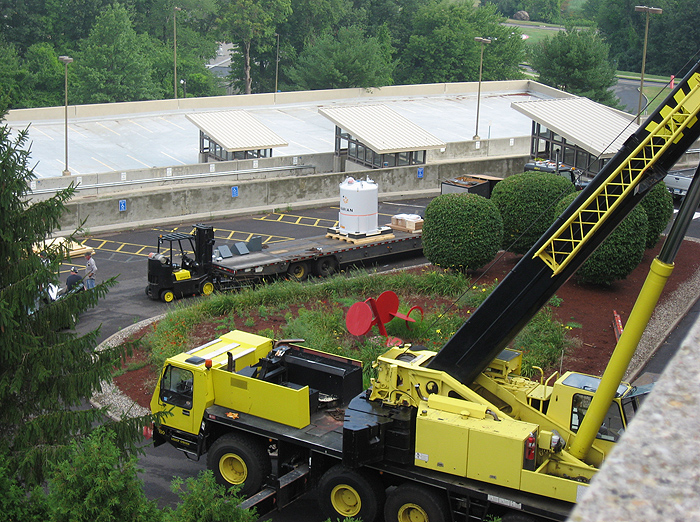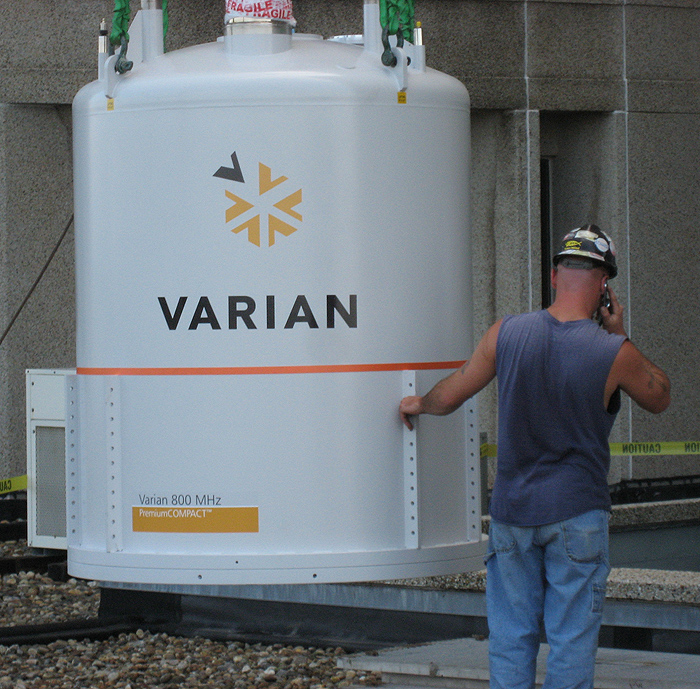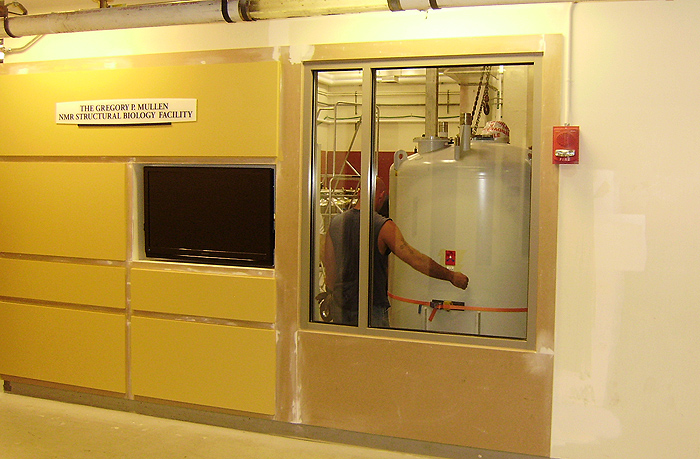
A sophisticated imaging machine – known as an 800 MHz nuclear magnetic resonance (NMR) spectrometer – is now in place in the Gregory P. Mullen NMR Structural Biology Facility in the Health Center’s sub-basement.
Almost as challenging as securing the $2 million National Institutes of Health grant for the new NMR spectrometer was the task of getting its primary component into the building.
The machine’s four-ton magnet wouldn’t fit in any of the elevators that reach the sub-basement, so Campus Planning staff, engineers from the magnet’s manufacturer, and rigging contractors had to lower it down an air shaft with a giant crane one morning in late July.
NMR is an imaging technique that enables researchers to study the structure, function, and dynamics of proteins.

“Knowing the three-dimensional structures of proteins is essential for understanding their biological function, and is invaluable for indentifying lead compounds as drug candidates,” says Jeffrey Hoch, professor of molecular, microbial and structural biology and principal investigator on the grant that made the acquisition possible.
Once it’s operational – likely before the end of the summer – the new machine will be the University’s most powerful NMR spectrometer among the four at the Health Center and three in Storrs. It’s one of fewer than 50 instruments of its caliber in use at academic institutions in the United States.
“The proteins that will be studied using the new instrument are involved in viral and bacterial infection, cancer, neural development, and other biological pathways important for both health and disease,” Hoch says.
In preparation for the installation of the new spectrometer, the Mullen NMR Facility underwent nearly $1 million in renovations.



